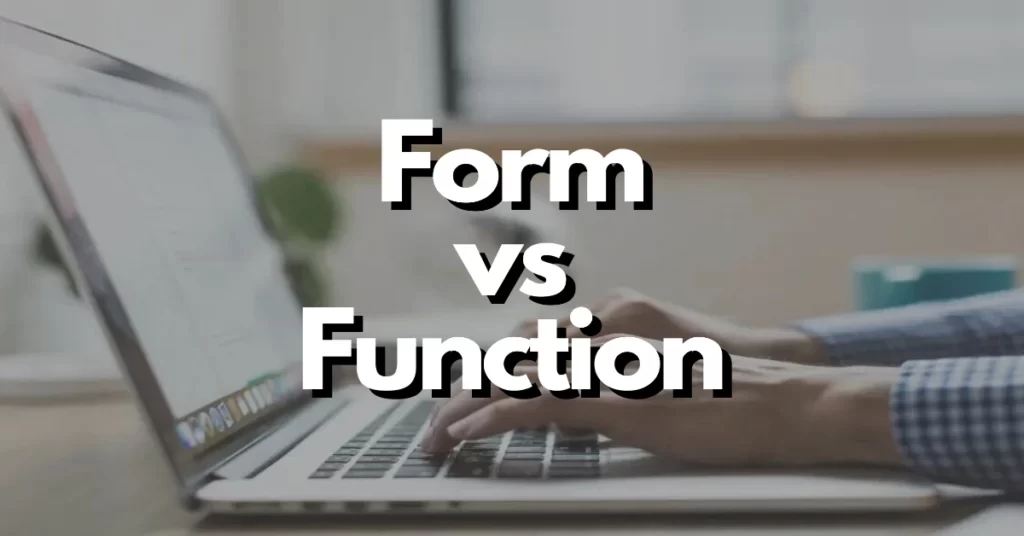
Form Vs Function
Form and Function are the two main parts of a WordPress website. When you are building a WordPress website, these are the parts to code. Here, in this article, get to know everything you need to know about form vs function.
Form Vs Function in WordPress – An Introduction
Form in a WordPress website are the visual aspects that the user is able to see and with which the user interacts. The function of a WordPress website is the code on which the visual and interactive components are built.
Here, we can also take form as themes and function as the plugins. But the big confusion regarding their consideration is what can be taken in a theme and what in a plugin? All the web developers out there have their own unique approaches in a different way. Till now, no solid solutions are found to surely include them into theme or plugin.
There are innumerable themes and plugins available out there. Theme shops can help you to segregate things that are supposed to be included in theme or plugin.
In some of the commercial themes, the authors try to create with maximum functionalities possible. It is especially advantageous to them as it provides many features at a time.
A lot of WordPress development company consider it as a bad practice to use or create such themes because the possibilities of updates that are brought by theme authors abandoned the theme and as a result leave those everyday users with no support resource.
As mentioned above, Form vs Function in web design is totally based on opinions. Some of these are made as general concepts which are adopted by the majority of the WordPress community. Opposite to that, there are certain developers who don’t follow these practices at all. The entire concept of form and function can blur various things in web development.
There is no conceptual answer to this as a developer can consider function and the same can be considered as the form by any other developer.
Now, let me tell you what is generally thought by a common developer. It may not be absolutely what you think, but it is just and opinion. If yours is different from this, let us know and we will get an opportunity to learn something new and discover a new approach.
Here are some questions and answer to them which will help you solve your confusion regarding what to be taken as a theme and what to be taken into plugin; Read on and find it out!
Should it be put in a Style Guide?
First, you need to figure out where the code written by you would be included. Will it be firstly included in a style before being a part of the theme? If you have a function which retrieves a list of authors and the function which is only generating data, you should not include data in a style guide so that it can be placed into a plugin. Later, the function in the theme and style will be called out the markup.
Can you Switch Themes?
Here you should have the only goal to have the ability to switch themes without copying the files creating functionality. For an instance, if you have a holiday theme which will be used only on holiday timings of the year and you also have the main theme which is used in the remaining year.
You have gamification system on your website which would award users based on their interactions on the site. This thing can be changed when new rewards added or changed the criteria of giving away rewards. You can’t copy over all codes every time you switch the holiday theme. So, when you put gamification system in a plugin, it updates itself on its own and without breakage.
Is it the Only Plugin?
This is probably a common question. Whether the code you write can be made into the standalone plugin! If yes, then better you place that code in a plugin, but this will make your line blur. A standalone plugin also includes HTML markup, CSS, and JavaScript.
If you don’t want to use such functionality, will you be able to disable it through a plugin or would you need to edit the template in a theme? This would be the question which would make you scratch your head. Every website will be different and have its own required and optional parts.
Can It Be Easily Found?
It is nothing bad than to have a pore over a file with 1000+ lines of code to find just one function that’s causing a bug. You want to be able to have a look at your files and plugins and know where the little functionality is going to work out. If you place all the code for an events calendar into a separate plugin, you’ll be able to find out quickly.
The last thing that is supposed to be mentioned is it is the biggest advantage to separate Form from Function. The reusability separating both of them is highly beneficial. Using a plugin into a new site which is under development and getting the required results is a priceless achievement.
If the plugin is successful for one site, and if you get the requirement for the exact same functionality, you can use the same plugin’s functionality to create a separate plugin. And after that, the only thing you need to do is to match the styles to the new site.
Hence, separating Form and Function in WordPress development can improve the workflow of the development process and make the development process even more enjoyable experience. You can also hire a professional WordPress developer if you are not comfortable with the coding know-how.

